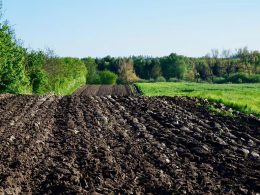Gold Standard has released its Engineered Removals Activity Requirements, a new framework to guide the certification of high-integrity engineered carbon dioxide removal (CDR) projects. The initiative marks a significant expansion of the NGO’s voluntary carbon market leadership, aiming to support the development of robust methodologies while ensuring environmental and social safeguards.
The framework outlines core requirements for engineered CDR projects seeking Gold Standard certification, including reversal risk mitigation, mandatory buffer contributions, and alignment with key regulatory and voluntary frameworks such as the EU Carbon Removal Certification Framework, ICAO CORSIA, and Article 6.4 of the Paris Agreement.
“As companies move towards net zero, best practice frameworks are increasingly recognising that carbon removals must complement emissions reductions,” said Dr Fiona Perera, Manager of Methodology Development & Innovations at Gold Standard and member of the SBTi Removals Expert Working Group. “Accurate measurement and the responsible use of removal credits are essential to uphold integrity in this rapidly growing sector.”
Gold Standard emphasised that engineered removals must not replace emissions cuts, but rather complement them to maintain alignment with the 1.5°C climate target.
“Engineered removals are essential to achieving a 1.5 °C pathway,” said Margaret Kim, CEO of Gold Standard. “We have certified biological CDR solutions for two decades; now we are applying that same integrity and collaborative approach to engineered CDR. We invite developers to use these requirements and work with us to build new methodologies and deliver durable projects that benefit local communities.”
The first methodology under this category—Accelerated Carbonation of Concrete Aggregate, developed with Neustark—was launched in 2022, with credits issued in April 2024. Two additional methodologies were updated in June 2025 and are now available:
- Carbon Mineralisation using Reactive Mineral Waste, also in partnership with Neustark, with expanded baseline and eligible waste scope.
- Biomass Fermentation with Carbon Capture and Geologic Storage, developed with Summit Carbon, featuring broader CO₂ source eligibility and updated leakage guidelines.
Both are currently under review by the Integrity Council for the Voluntary Carbon Market to ensure compliance with its Core Carbon Principles. A new biochar methodology—covering both artisan and industrial-scale production—is also under development.
Developers working on novel CDR solutions are encouraged to submit concept notes to Gold Standard for potential methodology development. All projects must demonstrate contributions to at least three Sustainable Development Goals (SDGs). In parallel, Gold Standard is advancing a ‘Just and Sustainable Transitions Framework’ to reinforce the socio-economic and environmental impact of engineered removal initiatives.





















